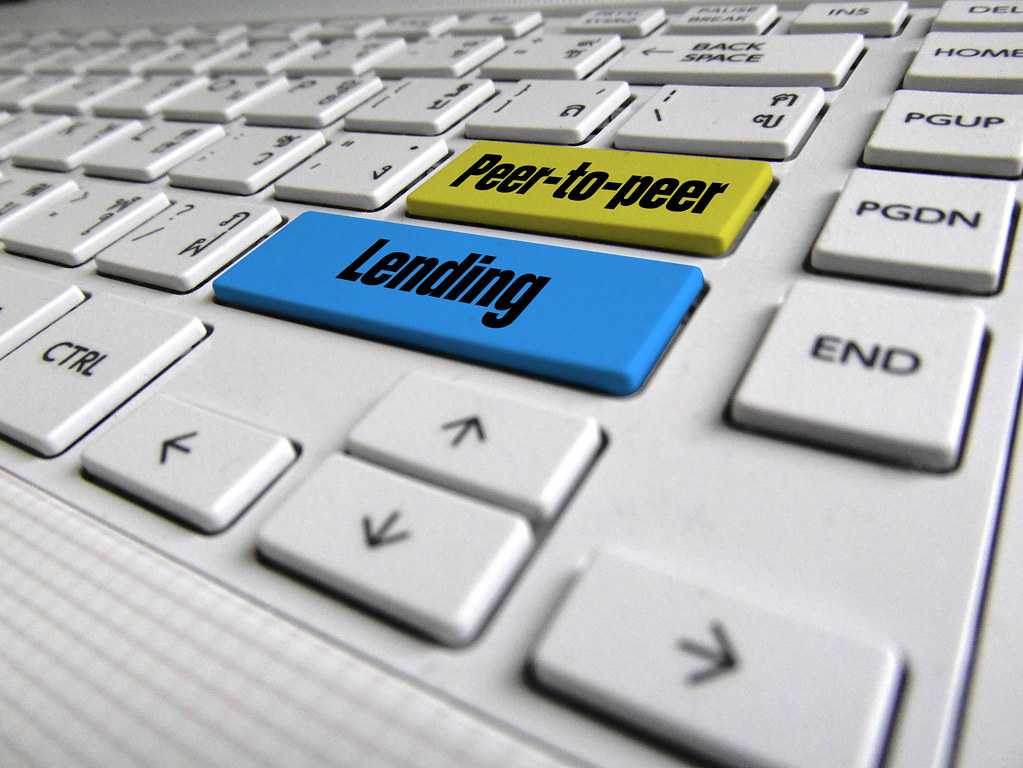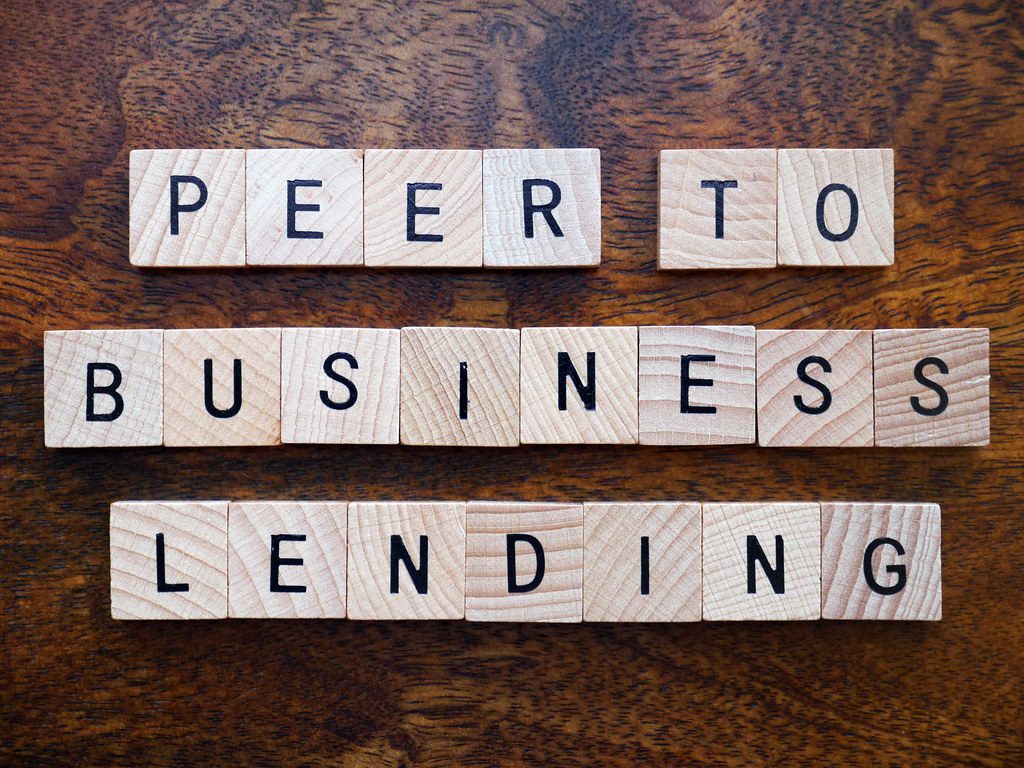
Table of Contents
Intro: How to Make Money with Peer-to-Peer Lending Platforms
How to Make Money with Peer-to-Peer Lending Platforms: Borrowing of funds from one individual to another has gained popularity in the recent past and is termed as P2P lending. It provides borrowers and investors a platform direct link without involving other middle agents such as banks and other financial institutions. Lenders can gain good returns by lending their money to individuals or small businesses whereas the borrowers can get their loans at cheaper interest rates.
Here in this guide, we will be discussing how to make money with P2P lending platforms, and the dangers that are involved, how to maximize your revenues and minimize the dangers at the same time.

What is Peer-to-Peer Lending?
Peer-to-Peer loan is a direct credit where borrowers obtain loan facilities from other individuals or companies via an internet facility. These are also known as brokers who help in the process of acquisition of the loans, collection of debts and ensuring that each of the parties fulfills his or her obligations. A loan is securitized by investors who can put small amounts of money into several loans thereby minimizing exposure to risk associated with defaults by borrowers.
Some of the active P2P lending platforms are Prosper, LendingClub, Funding Circle and Upstart. Some of them work slightly differently while others are almost similar operating on the same model of connecting lenders with borrowers.
What is Peer to Peer Lending and how does it operate?
As you can understand, to make money with P2P lending, you become an investor in an online platform. Once registered, you can view a list of loan requests which have been submitted by the borrowers. These borrowers are then ranked depending on their creditworthiness and you then choose which loans to finance.
How Does Peer-to-Peer Lending Work?
Here’s a step-by-step breakdown of how it works:Here’s a step-by-step breakdown of how it works:
Create an Account: Create an account on a P2P lending platform and go through identification process. To purchase something you will have to connect a bank account in order to complete the payment.
Deposit Funds: Move the amount of money that you wish to invest to your account on P2P lending platform.
Browse Loan Requests: The profiles of the loans available for funding are listed, providing such information as the credit score of the borrower, the amount of the loan requested, the purpose of the loan, as well as the interest rate.
Select Loans to Fund: Select the type of loans you wish to fund. There is little risk involved in providing small sum of money; you can invest as low as $25 in one loan to reduce the risk of loosing your money because the money is divided among borrowers.
Receive Payments: It is repaid through installments, which combined debt and interest are paid on a monthly basis. The platform gathers these payments and invests your part into your account.
Reinvest or Withdraw: The other choice available is to either reinvest the earnings back to the new loans or take the profits to a bank account.
The following are the ways through which one can make money with peer-to-peer lending.
Making money with P2P lending is relatively straightforward: from the loans you fund, you earn interest. But to achieve the maximum profits and minimum risks there are some points to consider.
How to Make Money with Peer-to-Peer Lending
1. Understand Interest Rates and Borrower Risk
The major form of getting paid with P2P lending is through the interest charged on borrowers. Essentially, each individual loan may be assigned what is called a varied rate of interest depending on the credit score and other aspects of risks of the borrower. Borrowers who have good credit score a tend to have lower interest rates while borrowers who have low credit scores tend to have higher interest rates to cater for the high risk that is associated with them.
To maximize your returns:
Evaluate Risk vs. Reward: Subprime loans give higher income for the financial organization but it is coupled with a higher risk of non-repayment. International banks’ experience showed that it is efficient to have both more risky and less risky loans in the portfolio.
Focus on Credit Ratings: Be keen on borrowers with good credit rating especially in this market. Credit scoring systems, debt-to-income ratios and loan history are generally provided by platforms through which common risks can be evaluated.
2. Diversify Your Investment Portfolio
To minimize risk in P2P lending diversification is the name of the game. It helps to avoid the problem of a single loan affecting all the others due to an occurrence of a default. Many investment types let you invest in small chunks, which is usually $25 per loan and that means you can diversify.
Tips for diversification:
Invest in Different Borrower Categories: Credit the incorporation of both good and bad credit risk clients. Offer both high risk high return loans as well as the safe and secure loans.
Spread Across Loan Types: Funding personal loans, business loans, a debt consolidation loan, and any other types of loans you may think of are good funding ideas. This minimizes the dangers that are related to economic risks affecting all aspects of your portfolio.
Reinvest Earnings: When the borrowers pay back the loans, the money is reinvested into new loans so that your money can keep working and compound the returns.

3. Select the Right Platform
Every P2P platform is different, fee structure, borrowers, and services provided by P2P platform to the borrowers. Choosing the platform correctly presents the key to making the best revenues. There are some which focus on personal loans, some others focus on business loans, student loans or even business real estate among others.
Popular platforms include:
Prosper: Best known for offering plethora of personal loans and consumer loan products hence having strength in consumer loans.
LendingClub: Again, it is one of the biggest ones that specialize in personal and small business loans.
Funding Circle: Emphasis on extension of credit to the SMB sector ; and has been involved with the entrepreneurial domain.
Upstart: Focused on personal loans; however, unlike most other credit comparison companies, it goes beyond conventional score analysis and takes into account clients’ education and work experience for loan approving.
Also before investing, compare each platform’s charges, rate of return, and the rate of defaulted payments.
4. Automated Investing is something that investors should consider.
More P2P platforms have an auto-invest feature, which enables you to specify the characteristics you want in your investment target (i. e. credit rating, loan length or interest rate) and let the platform invest for you accordingly. This pulls resources together and put the money to work always thus saves considerable time.
Automated investing also helps:
Reinvest Profits Efficiently: Automated investing, on the other hand, does not leave your earnings to gather dust because they immediately get re- invested into the new loans.
Maintain Portfolio Balance: It helps in the management of the risk/reward ratio by distributing loans you intend to take over various types of loans.

5. Minimize Default Risk
Probably the greatest risk in P2P lending is the borrower risk which involves a situation where the borrower is unable to repay the borrowed money. While defaults are unavoidable in P2P lending, there are ways to minimize the risk:While defaults are unavoidable in P2P lending, there are ways to minimize the risk:
Focus on Borrower Creditworthiness: Avoid borrowers who are considered high risks by maintaining only customers with good credit ratings and proper repayment records.
Monitor Debt-to-Income Ratio: We also support the null hypothesis arguing that borrowers with a high debt level as compared with income are more likely to default. Seek the clients with a lower DSI; they are less risky than the ones with a high DSI.
Shorter Loan Terms: Short-term loans in this case may be less risky as compared to long-term loans because the latter can take a long time and certain circumstances may change.
6. Utilize Secondary Markets
Some of the P2P platforms provide for secondary market through which investors are able to sell their loan investments before the maturity period. This feature can also be used to release some capital in case this is necessary and provides a way to sell out from the loans which are no longer wanted. Loan sale in secondary markets is essential when it comes to practices for managing change in overall financial objectives.
Risks of Peer-to-Peer Lending
While P2P lending offers a unique opportunity to earn attractive returns, it’s important to understand the risks involved:While P2P lending offers a unique opportunity to earn attractive returns, it’s important to understand the risks involved:
Borrower Default: The risk involved in P2P lending is that it is possible for the borrower to default an offered loan hence incurring some or total loss for the investors. Consequently the higher risk borrowers are likely to default hence the need to diversify the portfolio, to include ‘safer’ loans.
Platform Risk: It also should admitted that there is a risk associated with the collapse of the P2P platform where one has invested their money. Most of the platforms have these measures in place but it’s always advisable to do some due diligence on the status and credibility of the platform.
Economic Downturns: Default rates also increase during some period of economic upheaval, recession for instance, hence impacting returns. One way to avoid this risk is to diversify across the multiple borrowers and across industries of borrowers.
Lack of Liquidity: P2P loans are usually non-standard commodity securities, which keep investors from selling their investments or finding someone to whom they can sell it. In most cases, some of the platforms do provide second markets; however, the level of liquidity is not as high as compared to stock or bond markets.
Maximizing Your Returns with Peer-to-Peer Lending
The Way Towards High Interest Rates on Your Investments through Peer to Peer Lending
To make the most out of P2P lending, consider the following strategies:To make the most out of P2P lending, consider the following strategies:
Start Small and Learn: It is recommended start with large sum of money first in order to get used to the system or procedures of trading. It is recommended to start investing small amount of money and gradually increase this amount as one gains some experience in the investment process.
Track Performance: Why did the three business entities invest in fixed assets? What were their expectations, and how were they managing their investment now that it seemed lower in value? Ensure you regularly monitor policy changes regarding the platform as well as consistent changes in the economy may influence borrowers’ behaviours.
Stay Diversified: That means you need to diversify as much as possible in order to minimize your risk against any company going bust. Proceed to reinvest your earnings into new loans and as much as possible maintain a good diversification of loans at all times.
Conclusion
Borrowing and lending through a platform is easy and can earn one much profit in equal measures. By realizing the possibilities of risks and investing in different kind of loans you’ll be able to create constant profits and help people and companies improve their financial situation. Like with any investment, P2P lending involves the need to perform some homework, to be patient and potentially have a long term focus, but if managed properly it can also be a fascinating and profitable way to build up ones wealth.
FAQs on How to Make Money with Peer-to-Peer Lending Platforms
- What is peer-to-peer (P2P) lending?
- P2P lending is a method where individuals lend money directly to borrowers through an online platform, bypassing traditional banks.
- How do I make money with P2P lending?
- You make money by lending to borrowers and earning interest on the loans. The borrowers repay the loan with interest, providing you with a return on your investment.
- What is the typical return on investment for P2P lending?
- Returns vary by platform and loan type, but typical returns range from 5% to 10% annually, depending on the risk level of the loans you choose.
- What are the risks involved in P2P lending?
- The main risks include borrower default, platform failure, and lack of liquidity, meaning it can be difficult to withdraw your investment before the loan term ends.
- How do I minimize the risk of default in P2P lending?
- You can minimize default risk by diversifying your investment across many loans, lending to borrowers with higher credit scores, and selecting loans with shorter terms.
- Can I lose money in P2P lending?
- Yes, if a borrower defaults on their loan or if the platform you’re using fails, you could lose part or all of your investment.
- How much can I invest in P2P lending?
- Most platforms have a minimum investment requirement, often as low as $25 per loan. There’s no strict upper limit, but it’s important to diversify across multiple loans.
- What platforms offer P2P lending?
- Some popular platforms include LendingClub, Prosper, Upstart, and Funding Circle.
- Is P2P lending safe?
- P2P lending carries risks, but with proper diversification and by using reputable platforms, you can manage these risks effectively.
- How does borrower creditworthiness affect my returns?
- Borrowers with lower credit scores typically offer higher interest rates, but they are also more likely to default. Higher creditworthiness borrowers offer lower returns with less risk.
- How can I diversify my P2P lending portfolio?
- Diversify by lending small amounts to a wide variety of borrowers with different credit scores, loan terms, and purposes (e.g., personal loans, business loans).
- What are the fees associated with P2P lending?
- Most platforms charge a service fee or investor fee, typically ranging from 1% to 5% of the returns. It’s important to review the fee structure before investing.
- What happens if a borrower defaults?
- If a borrower defaults, you may lose part or all of your investment in that loan. Some platforms may help recover some of the funds, but it’s not guaranteed.
- How do I choose which loans to invest in?
- Assess the borrower’s credit score, loan purpose, income, and debt-to-income ratio. Balancing high and low-risk loans can provide a stable return.
- Can I reinvest my earnings from P2P loans?
- Yes, most platforms allow you to reinvest your earnings into new loans, helping you compound your returns over time.
- What is the average loan term in P2P lending?
- Loan terms vary but are typically between 3 to 5 years for personal loans, and shorter terms may be available for business loans or other types.
- How does the platform make money?
- P2P lending platforms make money by charging fees to both borrowers and lenders. These fees include loan origination fees and service fees.
- Can I sell my loans before the term ends?
- Some platforms offer secondary markets where you can sell your loans to other investors if you need liquidity before the loan term ends.
- Are there tax implications for P2P lending income?
- Yes, interest income earned from P2P lending is generally taxable. Be sure to consult a tax advisor about how your earnings will be taxed.
- Is P2P lending legal?
- Yes, P2P lending is legal in many countries, but regulations vary. Be sure to check the legal status and regulatory framework in your country or state.
- How do P2P platforms assess borrower risk?
- Platforms assess borrower risk using various factors like credit score, income, employment history, and debt-to-income ratio. This risk assessment determines the interest rate for the loan.
- Can I automate my P2P lending investments?
- Many platforms offer automated investing options, where you set specific criteria (e.g., interest rate, credit score range), and the platform invests on your behalf.
- What’s the difference between secured and unsecured P2P loans?
- Secured loans are backed by collateral (e.g., property or assets), while unsecured loans have no collateral. Secured loans are generally safer but may offer lower returns.
- How do I get started with P2P lending?
- Start by choosing a reputable P2P lending platform, signing up as an investor, depositing funds, and then selecting loans to invest in.
- What happens if the P2P platform goes out of business?
- If the platform fails, you may lose access to your funds. Some platforms have backup servicing arrangements in place, but this varies, so it’s important to research before investing.
Also visit:-



